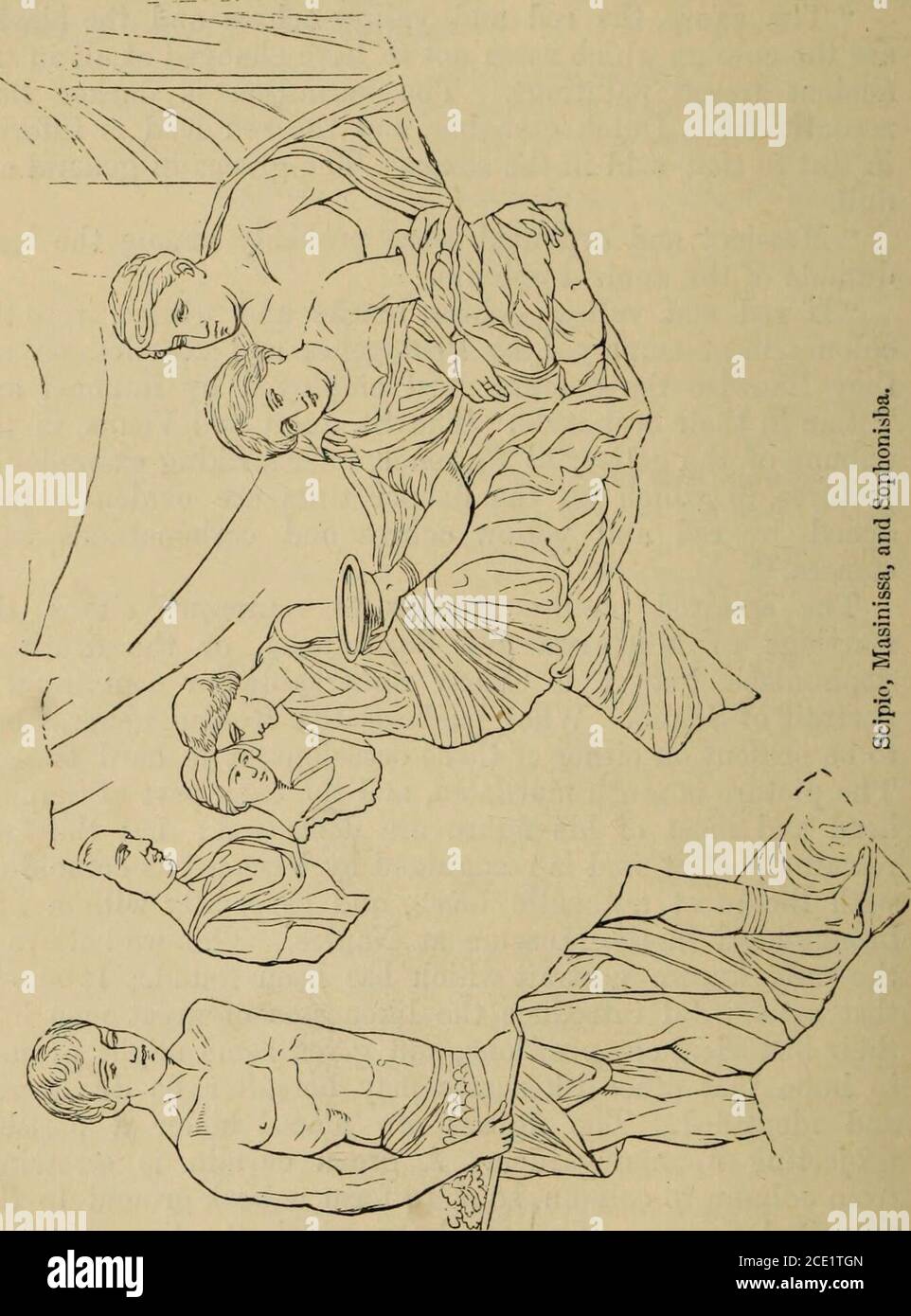. Pompeii; its history, buildings and antiquities : an account of the destruction of the city, with a full description of the remains, and of the recent excavations and also an itinerary for visitors . e is much mutilated, and the back part of Scipioshead and most of his figure are destroyed ; but the faceremains perfect, and is recognized by Visconti as coincidingwith the most authentic busts, and especially with a finebronze head in the Museum at Naples. This we believe isthe only known portrait which has been found. It showsthat artists did introduce the likenesses of great men intotheir hi

Image details
Contributor:
Reading Room 2020 / Alamy Stock PhotoImage ID:
2CE1TGNFile size:
7.1 MB (299.5 KB Compressed download)Releases:
Model - no | Property - noDo I need a release?Dimensions:
1360 x 1837 px | 23 x 31.1 cm | 9.1 x 12.2 inches | 150dpiMore information:
This image is a public domain image, which means either that copyright has expired in the image or the copyright holder has waived their copyright. Alamy charges you a fee for access to the high resolution copy of the image.
This image could have imperfections as it’s either historical or reportage.
. Pompeii; its history, buildings and antiquities : an account of the destruction of the city, with a full description of the remains, and of the recent excavations and also an itinerary for visitors . e is much mutilated, and the back part of Scipioshead and most of his figure are destroyed ; but the faceremains perfect, and is recognized by Visconti as coincidingwith the most authentic busts, and especially with a finebronze head in the Museum at Naples. This we believe isthe only known portrait which has been found. It showsthat artists did introduce the likenesses of great men intotheir historical compositions, and gives some slight groundto hope that other likenesses may hereafter be discoveredand identified. The figures are placed under a portico, projecting upon a garden. A green curtain is stretchedfrom column to column, so as to form a back-ground to theprincipal figures. The couch on which the two principalfigures recline is also green, but it is covered in part with a • Davy on tlit colours used in painting by the ancionts.—Phil. Trans. IvSlSi 292 POMPEII. large violet-coloured cloth, which passes over the shouldersof Masinissa, and down to the feet of Sophonisba. Both. have their heads encircled with a regal diadem. The fleshof Masinissa is painted of a clear olive-brown. Sophonisbais dressed in a yellow pallium and green tunic. Scipio POMPEIAN ART. liWo wears his warriors dress, with a red mantle. The can-delabrum behind Masinissa seems meant to represent ivory. We cannot close this account better than with two picturesof rather different character, both representing artists atwork. The first is a female employed in painting a pictureof the bearded Bacchus. She is dressed in a light-greentunic, without sleeves, over which she wears a dark-redmantle. Beside her is a small box, such as, we are told byVarro, painters used, divided into compartments, into whichshe dips her brush. She mixes her tints on the palette, which she holds in her left hand. The ot